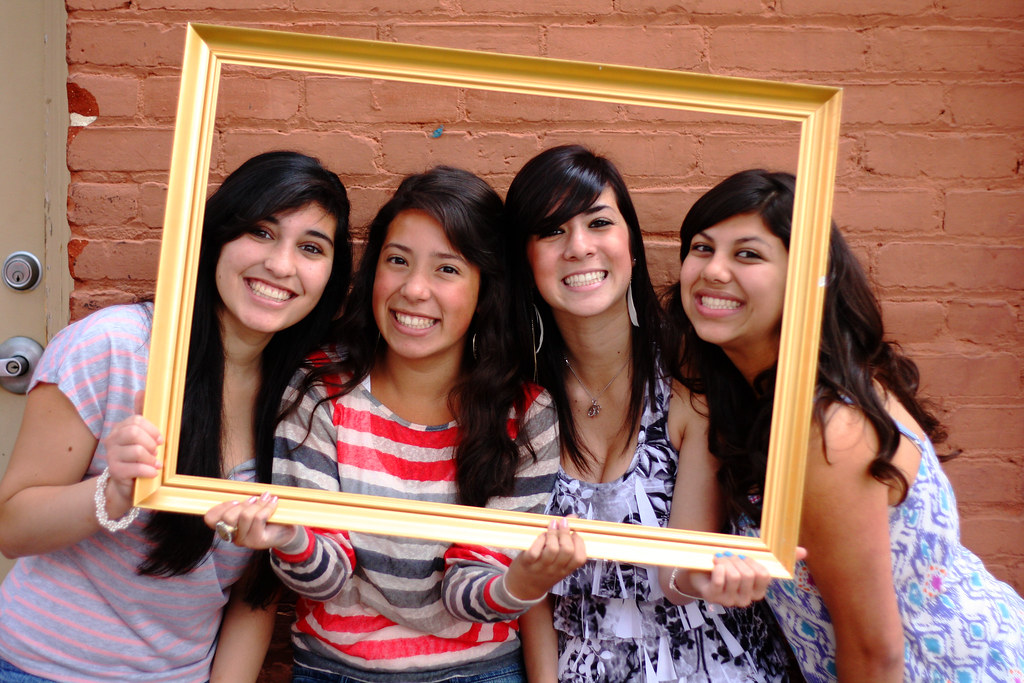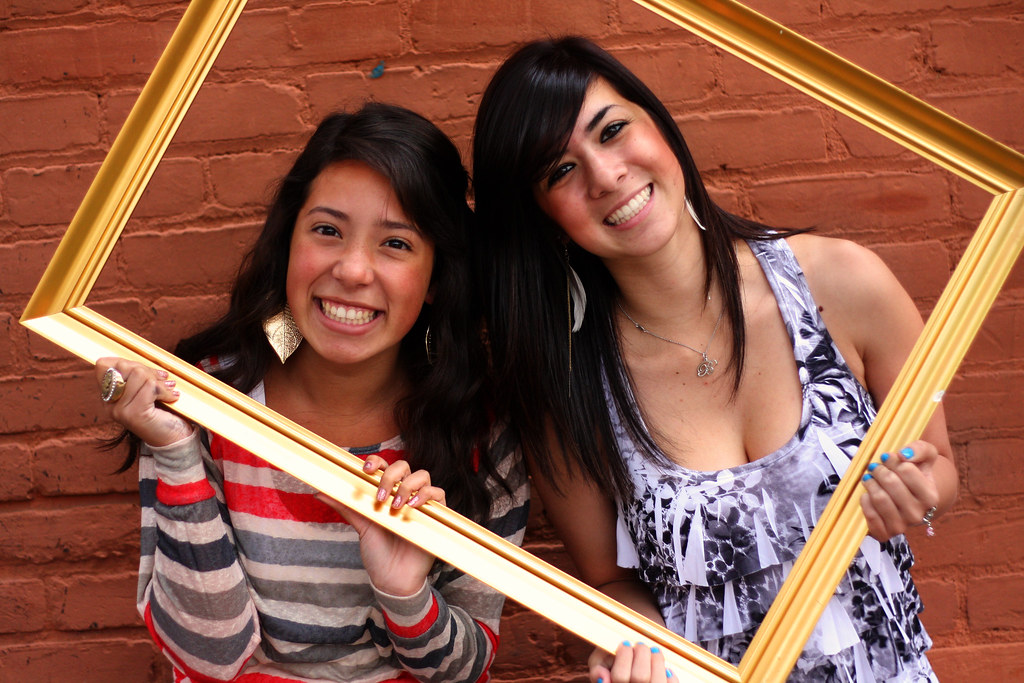I edit all my pictures before I post them anywhere. That's not to say I edit all my pictures, but any picture I print, post to Facebook or anywhere else are edited.Well, except for my Hipstamatic pictures. These are done through the app.
Why do I edit my pictures? For the same reason I put on make up before I leave the house, to make things look better. That's not to say I'm not going to do everything I can do to get my picture as good looking as I can straight out of the camera, but I do like to add a little extra color pop. I also find that I like my pictures slightly underexposed, but I prefer to do that post production, not in camera so I also generally lighten up my exposure a bit. If I'm lucky about the only thing I'm doing is adding a little color burst because color correction and cropping just makes my work harder.
Since I'm not a professional, there are certain things I don't do. For example, I don't whiten teeth, I don't remove wrinkles and I don't put extra sparkle into eyes. I have limits to my madness.
There are all kinds of software out there for photo-editing. I'm by no means an expert. All I can do is share what I use, why I use it and what other alternatives I've explored.
I currently use
Photoshop Elements 10.0 which is the consumer version of
Photoshop CS5. This runs in the neighborhood of $119 and usually somewhere around this time of the year Costco offers a rebate off this price so you should be able to get it for around $80 if you wait for the right time (sale!).
For years, I've wanted to upgrade to Photoshop. I was recently tempted when Adobe had a special offer to upgrade from Elements 10.0 to CS5 for only $299 (ouch, I know!), which was a $400 savings from their normal outrageous price. The price is precisely why I've never upgraded. I honestly don't feel I know enough to get my money's worth from the professional grade of Photoshop and therefore, I personally can't justify the expense right now. Even $300 to me is pretty steep because in order to maximize my investment, I would want to take some Photoshop classes. I would rather take a photography class in Venice instead. If I were a professional photographer, then Photoshop CS5 would be a must.
With Photoshop's Elements, I used to use a workflow process called Clean Color which I learned from Erin Cobb and it worked pretty well for me. However, it was time consuming based on the number of photos I was taking. If it took me just 2-3 minutes to edit a photo and I had 100 photos to edit, well that's a lot of time (5 hours!) so I started looking into purchasing
Lightroom which is another product by Adobe that I heard works well for photo organization and batch photo processing. I downloaded the 30-day free trial and liked it well enough, but even that comes with a list price of $299.00. I think you can get a student version of $89.00. I guess you can say I wasn't sold. I do like that Adobe offers 30-day trials of their software. If you're considering any of their programs, try them out for free first.
Back to
Clean Color for a moment, if you do have Elements or are going to get it, I still would recommend Erin Cobb's clean color class. I learned a lot in a short amount of time from her class. I'm glad I made the investment.
But recently I heard that
Totally Rad, a maker of actions that I've always coveted but never bought because they only work with Photoshop created a tool called
RadLab. When I heard that Radlab was designed to work not only with Photoshop, but with Photoshop Elements, too. I was giddy with excitement. They, too, offer a trial version so I downloaded the software and was hooked from the get go. I've been using this since December 2011. With it, I'm able to edit my photos faster and more consistently than before. Plus it gives me the ability to try different looks depending on how I feel. The software is $149.00, but if you try the trial version first, they'll likely offer you a 15% discount to buy it before your trial is over. I highly, highly recommend it.
If you are not sure that photo editing is for you, then I would recommend a free program called
PicMonkey. They are the same designers of free software called
Picnik. I never used either programs, but I have heard really good things from reliable sources for both products. From what I can see, the problem with these options is that they can be time intensive so I would only turn to this if you want to see if photo editing is for you or you only want to do it to a few of your photos at a time.
Regardless, when it comes to photo editing, I'm of the belief that less is more. You're not editing your photos to hide bad picture taking. It's not going to happen. It's the old adage...you can put lipstick on a pig, but it's still a pig.
I'm just editing my photos to give them that extra something. Also, the thing I like about editing is it allows me time to look at my pictures with a critical eye and weed the average or bad shots out. I'm not going to waste time editing a sub par photo unless there is some redeeming quality to it that makes me overlook the flaws.
Here's the workflow that works for me:
- I try to download my photos the night or day after I take the pictures. I generally do not delete them from my camera until later just in case something should (and sooner or later it will) happen to my computer. I don't have a sophisticated storage method. In my pictures folder, I have a subfolder for the current year. Within that subfolder is a folder for each month. I download my photos to the corresponding month and year.
- When I'm ready I go through my photos one at time, deleting bad shots or excessive duplicates. Then I go through them one more time, earmarking the photos I want to share and edit. I put these into a subfolder which indicates these are to be edited.
- When I'm ready, I edit my photos, putting them into another subfolder indicating these are edited files. I use the same file name, but add an extension that lets me know that I edited and what process I used to do so. I never save changes to my original photos. This is a conscious choice for two reasons:
- I produce my photos in jpegs and every time you save changes to a jpeg you compromise the quality of the file. I don't shoot in RAW (which is a higher quality file to edit) because I'm not a professional. I work to get decent exposure from the camera and my computer is not the fastest gun in town. RAW files are much larger than JEPGs so they take up more storage and can take longer to work with.
- If I should decide later that I don't like what I did when I edited the photo, I still have the original file intact to start all over again. This is also why I like to keep the edited file name with the original name at the start so that if I want to go back to the original for any reason, I know what file name I'm looking for.
- I don't tag my files in Photoshop Elements. I've just never had a good system for doing so. I can usually remember the year and around the month of a photo I'm looking for and my not having tons of subfolders, I can find the pictures I want pretty quickly. Plus, it's fun to look through my old photos every once and a while.
- At least once a month, if not more, I'll download my photos to a service that stores photos online. There are services such as Flickr and Costco that do this for free, but there are limitations to their storage options so recently I made a decision to pay for this service through a company called SmugMug. With SmugMug you can download your full resolution files which is something you can't do with companies that don't charge. I pay $8.00 a month for this peace of mind service which I think is reasonable. By having my photos downloaded to SmugMug, I don't need to worry about my computer blowing up or getting lost or stolen. Once the photos are downloaded to SmugMug, I erase them from my camera's memory card.

I know this can seem like a lot of work so now I'm going to illustrate the reasons why I go through so much trouble with some before and after shots:
First of all, I'm a believer in cropping the crud out if it makes the photo better. It's easy thing to do, but your goal should be to eliminate this step. I used to crop over 50% of my photos when I first started editing and now I crop less than 1%. I feel like less of a faker now. And if you're working with 100 pictures, anything you can do to trim the editing time down, is that much better.
Here's a photo that I think needed a good crop. I took this picture of my nephews a few years ago in Santa Barbara. Justin had bought some confetti eggs and was egging some hapless victim (this is what you do in Santa Barbara during the holidays). I captured this as the boys were running from the scene of the crime.
I liked the shot, but I thought there was too much distraction in the background so I cropped it to a portrait layout instead and added just a little color pop. Now the focus is on the mischievous looks of the boys. I like this much much better.
Below is a picture I took at sunset at the beach. No cropping necessary. The top is straight out of the camera. The bottom has a little color boost. Again, not much, but I like it better.
 Here's something a little different that I did recently using RadLab. The top picture is before and the bottom is after. I wouldn't necessarily want to change all my photos like this, but I think in this case, it works well.
Here's something a little different that I did recently using RadLab. The top picture is before and the bottom is after. I wouldn't necessarily want to change all my photos like this, but I think in this case, it works well.
Tomorrow, I'll be sharing some more ideas on how to improve your pictures straight out of the camera and then my last two steps will be sharing other resources that I found from real experts.





































